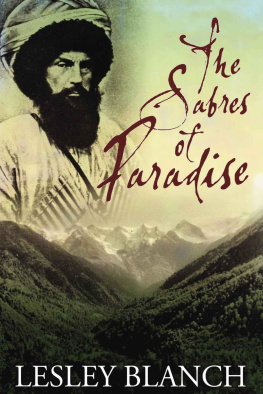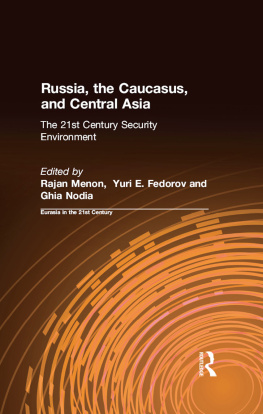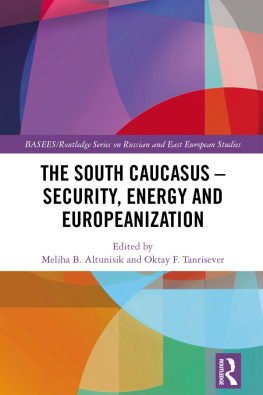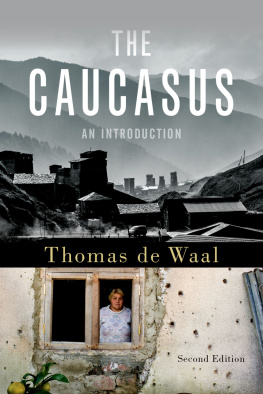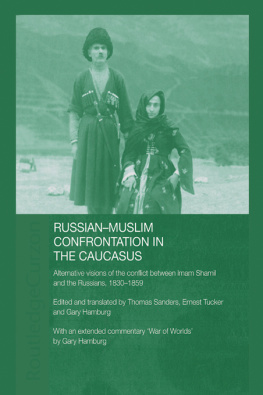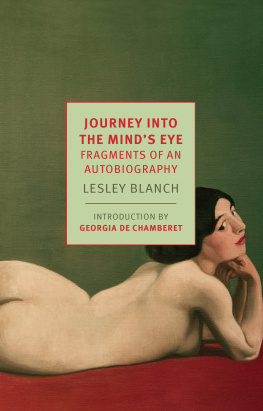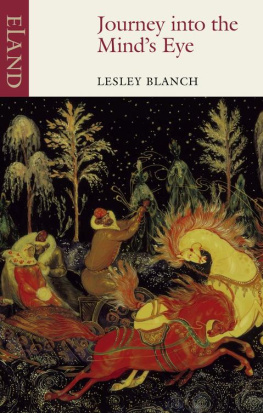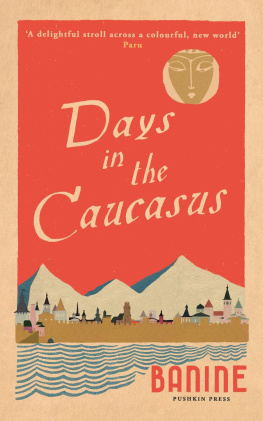Reviews
THE GUARDIAN Crammed with truly fabulous stories of fighting and love and violent death this profound and exhilarating book turns the struggle of the people of the Caucasus to remain independent of Russia into a universal saga it is no wonder Shamyl had such a powerful influence on Tolstoy and Pushkin.
LAURENCE KELLY It is on The Sabres of Paradise , with its unforgettable picture of the Imam Shamyl and the religious wars in which he was a central figure, that Lesley Blanchs reputation rests most firmly. The events she chronicles, as Philip Marsden reminds us, have suddenly become hugely topical: two genocidal wars in Chechnya, the rebirth of Russian nationalism, the attempt to impose its values on a Muslim clan and tribe, heir of Shamyls traditions, the struggle between what Marsden describes as two worlds, two battles, two societies.
NEW YORK TIMES BOOK REVIEW Twentieth-century Russia is only nineteenth-century Russia writ large. Miss Blanchs book is therefore especially welcome for she has provided a gallery of Russian portraits and in the course of her story outlined Russian foreign policy through most of the nineteenth century. I can imagine no better introduction to modern Russia.
PHILIP MARSDEN Like Tolstoys, Lesley Blanchs sense of history is ultimately convincing not because of any sweeping theses, but because of its particularities, the quirks of individuals and their personal narratives, their deluded ambitions, their vanities and passions.
HAMISH BOWLES writes in Jacqueline Kennedy: The White House Years (2001) Jacqueline Kennedy and Khrushchev maintained a spirited badinage through dinner. Mrs Kennedy had recently read The Sabres of Paradise , Lesley Blanchs dashing history of the Muslim tribes resistance to Russian expansionism in the Caucasus, and attempted to engage the Soviet premier in conversation on the subject. He responded with the comparative numbers of teachers per capita in the Soviet and Tzarist Ukraine. She cut him off with the playful riposte, Oh, Mr Chairman, dont bore me with statistics.
First published in Great Britain in 1960 by John Murray Limited.
This electronic edition published in 2015 by BookBlast ePublishing,
a division of BookBlast Limited, P.O. Box 20184, London W10 5AU.
Copyright Lesley Blanch, 1960.
The moral right of the author has been asserted.
Copyright this electronic edition Georgia de Chamberet, 2015.
All rights reserved. You may not copy, distribute, transmit, reproduce or otherwise make available this publication (or any part of it) in any form, or by any means, (including without limitation electronic, digital, optical, mechanical, photocopying, printing, recording or otherwise) without the prior written permission of the publisher. Any person who does any unauthorised act in relation to this publication may be liable to criminal prosecution and civil claims for damages.
Mobi ISBN 978-0-9930927-1-8
Print ISBN 978-0-9930927-2-5
BookBlast has been online since 2000 and is trademarked in the UK and the US.
Visit www.bookblast.com to find out more about the authors and their books.
Scanned by www.digitisemybooks.co.uk
Conversion and cover by www.mousematdesign.com
Cover portrait: Shamyl, Imam of Daghestan in 1859 , portrait by Thomas Horscheldt.
From the first edition of The Sabres of Paradise .
For
Edna and Marston Fleming
with love
The Sabres of Paradise
Contents
Position of the Caucasus.
Introduction
The Caucasians wrote love poems to their daggers, as to a mistress and went to battle, as to a rendez-vous. Fighting was life itself to these darkly beautiful people the most beautiful people in the world, it was said. They lived and died by the dagger. Battle-thrusts were the pulse of the race. Vengeance was their creed, violence their climate. I am at my eleventh head, boasted a Caucasian princeling, a twelve year old, who spoke French with a Parisian accent which won the admiration of Alexander Dumas and who coveted his fathers bag of twenty-four rebel heads, severed as contribution to the pacification of the province. The baby prince Georghi Melikov, at an age when he might have been sucking his thumb, was running it over the blade of his kindjal , or two-edged dagger, lisping that it had been made for him by Mourtazali the celebrated armourer. When Agha Mahommed, the Persian Eunuch, took Tiflis in 1795, his troops raped all the women they fancied and as a memento of their victory they hamstrung the right leg of every virgin taken. But the women, too, knew how to fight, for they were believed to descend from the Amazons. Beneath their veils they wore a dagger. When the inhabitants of Akhulgo were besieged by the invading Russian army in 1837, women fought beside men; when their ammunition had gone, they flung down rocks on the oncoming troops; when there were no more rocks, the men hurled themselves to death, on the bayonets below. And when the men were gone, the women flung down their children as living missiles, and leapt after them. Such was their desperate resistance. Such was this climate of violence.
Severed enemy heads or hands were always good coinage in the Caucasus. A Tousheen girls dowry was reckoned in these trophies. The more dashing a young Caucasian delikan , or brave, the more severed hands dangled from his saddle bow. Right hands, of course; left hands hardly counted and the loss of one never stopped a Caucasian from fighting. Sliced-off ears, a less cumbersome method of indicating the number of heads taken, were usually strung along the whip thong. When one Chechen chieftain found his son dead of wounds, he cut his body into sixty pieces and sent out horsemen across the mountains and valleys, each with a fragment, to be given to his kinsmen and vassals. For each piece, an enemy head was returned. Thus was his sons death avenged. Vengeance, vendetta or kanly , was often pursued through three or four generations, decimating whole families, till there was no-one left. A household was only reckoned poor, only pitied, when there was no-one fit to fight.
Vengeance and violence: such was the Caucasus throughout its dark history, reaching its apogee during the first half of the nineteenth century, when the invading Russian armies marched eastwards acquiring their Asiatic and near-Eastern provinces and met their first check among the Caucasian mountains. All the warring Moslem tribes now banded together in one terrible force, and under one man, Shamyl, the Avar, their Prophet and Warrior. In 1834 he sprang on to the scene in a flash of steel, a clap of thunder, like some flamboyant Prince of Darkness, the dramatic nature of his legend and his black banners matched by his backcloth of towering mountains, perpendicular rock cliffs topped by eagles-nest auls , or fortified villages, hung over ravines slit so deep no light ever penetrated the abyss where torrents raged and a never-ceasing wind howled down the passes. This was his birthplace the wild mountains of Daghestan, an almost unmapped rock waste, set between Black Sea and Caspian.
Only the Caucasus only Shamyls will barred the Russians overland route to India and their long-cherished dreams of colonial expansion eastwards. Every mile their armies marched east, every village taken, every Cossack frontier post established, was watched apprehensively by the rest of Europe, from Westminster to the Porte, by way of the Hofburg and the Vatican. Baron Meyerdorff, as the Tzar Nicholas Is mouthpiece, spoke of Russias salutary influence upon Western Asia. But Countess Nesselrode, wife of the Russian statesman, spoke for future generations and other continents too, when she wrote: Europe could not reconcile itself to the flagrant lack of delicacy in the simple fact of Russia being a great power.

